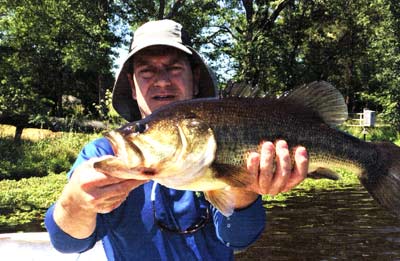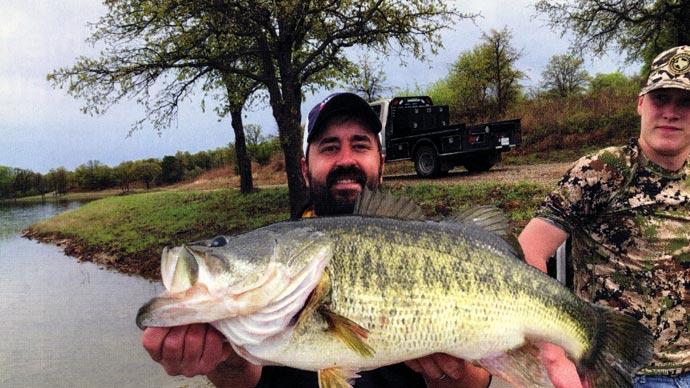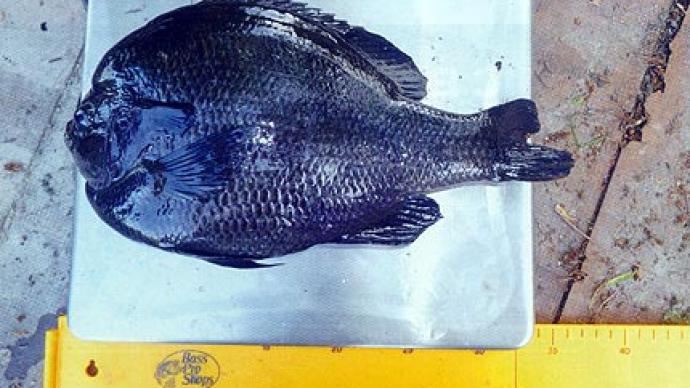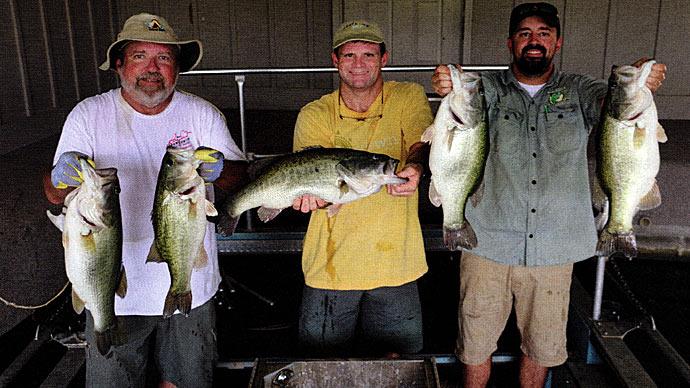
For decades, fishery managers and pond owners have been trying to upgrade fish populations by adding new fish that, hopefully, improve their fishery. This has included many species and subspecies and, even more commonly, from locally adapted fish populations thought to be genetically "better." These stockings have been accomplished in both new waters (no existing fish) and into waters with existing adult fish populations. Stockings of new fish have been done to address many issues, such as size, aggressiveness, reproductive potential, improved forage capability, and harvest potential, to name a few. Interestingly, the studies showing results over time are not commonly discussed.
In this issue of Pond Boss, we look at some results of stocking Florida Largemouth Bass (FLMB) with Northern Largemouth Bass (NLMB) into existing populations to see the introgression (mixing of the sub-species genetics). Reviewing this material, I was surprised (as I should have expected) to see the wide variance in results. It really does depend on the facts of each situation. Further, the concepts also appear to apply equally to other pond fish species.
We start with one study titled Spatial Patterns of Florida Largemouth Bass Genetic Introgression into a Northern Largemouth Bass Population after Stocking by Christopher R. Middaugh, Sean C. Lusk, Cody Massery, and Allison Asher in Journal of the Southeastern Association of Fish and Wildlife Agencies, 2022. In this study, the Arkansas Game and Fish Commission stocked 102 FLMB fingerlings per acre into two embayments of Lake Ouachita, a 40,000+ acre highland reservoir in western Arkansas, from 2007-2015. In 2019, they collected 1000 largemouth bass from throughout the reservoir to examine spatial patterns of FLMB introgression using 35 species-diagnostic genetic markers. They determined that 30.4% of individuals were NLMB and 69.6% were hybrids of NLMB and FLMB (F1 first cross and FX subsequent crosses), with no FLMB collected. The average percentage of FLMB alleles across all individuals collected was 11.4%.
In a companion study, Evaluating the Genetic Response Following Introduction of Florida Largemouth Bass into Two Large Arkansas Reservoirs by Sean C. Lusk, T. Brett Hobbs, Kelly Winningham, D. Colton Dennis, Jeffrey Buckingham, Christopher R. Middaugh, and Ronald L. Johnson, in Journal of the Southeastern Association of Fish and Wildlife Agencies, 2022 another lake was added to the study, DeGray Lake which is only about 760 +- acres but has similar characteristics.
However, most fish collected near stocking sites at the end of this study contained relatively low levels of FLMB alleles and very few F1 or FLMB were collected during the study.

Over the course of this stocking program, FX-NLMB increased in prevalence more rapidly than any other genotype. By the conclusion of this study, FX-NLMB had surpassed the NLMB as the most common genotype in stocking areas and in most of the non-stocked sampling areas of both reservoirs.
It should be noted that these two lakes are highland-type impounded waters, which are at the northern edge of where FLMB would be thought to do well.
However, in a study titled Subspecies Composition of Angled and Electro-fished Largemouth Bass in Texas Reservoirs, in more southern waters. Dijar J. Lutz-Carrillo, and Spencer Dumont in Proceedings of the Annual Conference of the Southeast Association of Fish and Wildlife. Agencies 66:75-81, 2012 Proc., there were more encouraging results. They found that in southern waters (natural integrated zone of FLMB and NLMB), FLMB likely are more challenging to angle than NLMB. Still, the phenotype (genetic trait) of reduced angler susceptibility (catchability) is mitigated (reduced) by introgression (genetic mixing), even at low levels of NLMB genes.
While many factors may function concurrently to determine angling susceptibility, including fishing pressure, the naivety of individual fish, learned lure avoidance, and stress from catch and release, we now know catchability is a genetic and heritable trait, as was previously discussed in earlier Cutting-Edge articles (see Garrett (2002) and Philipp et al. (2009).
Even when there were roughly twice as many NLMB in the survey as FLMB, the cross-population showed almost 50% Florida genetics. In one instance where there was roughly 15 times the number of NLMB as FLMB, the cross-population showed 29% Florida genetics. The number of crosses in the tests far outnumbered either FLMB or NLMB.
So, under these conditions in Texas waters, the FLMB genetics tend to spread quickly over time. This does not mean every FLMB trait is dominant. Note that when pure FLMB were removed from the dataset numbers (leaving only crosses with high levels of FLMB genetic influence), the trait of reduced catchability greatly dissipated. Stated differently, adding only a small amount of NLMB genetics caused poor catchability to become much less pronounced. In other words, even a 2% influence of Northern strain genetics improves the odds of catching that fish, compared to "pure" Florida genetics.
There is so much more that can be learned from these studies, including what factors affect the rates of change in addition to location, like-size of fish stocked, number of stocking attempts and habituation of fingerling fish. So, for you Southern Pond Bosses trying to get bigger, more catchable Largemouth Bass, there is hope and some proof that stockings like those discussed above may work. For those trying to improve other species' genetics in your ponds, these same concepts also likely apply to your situations. But for all, there are unknown consequences, some of which could be negative; it all depends!
Reprinted with permission from Pond Boss Magazine



